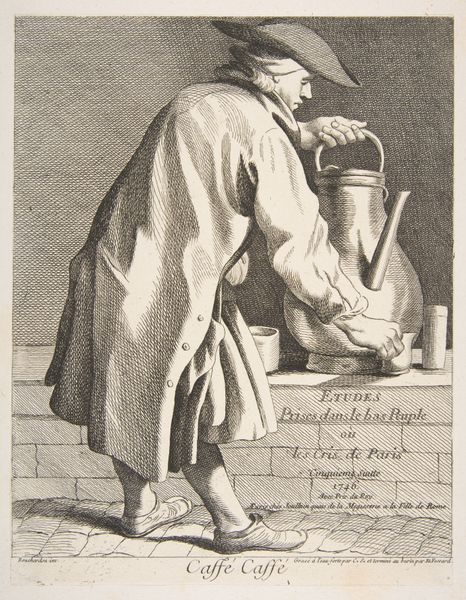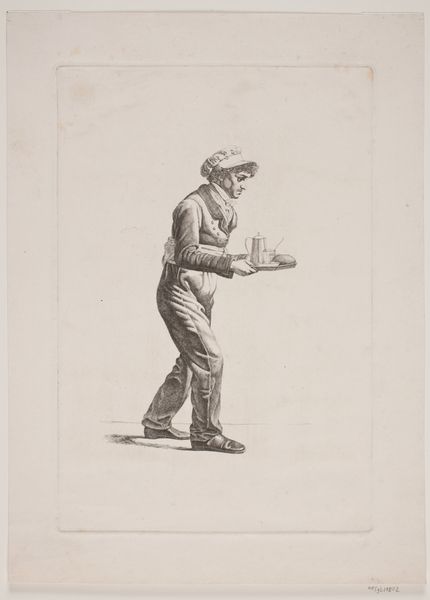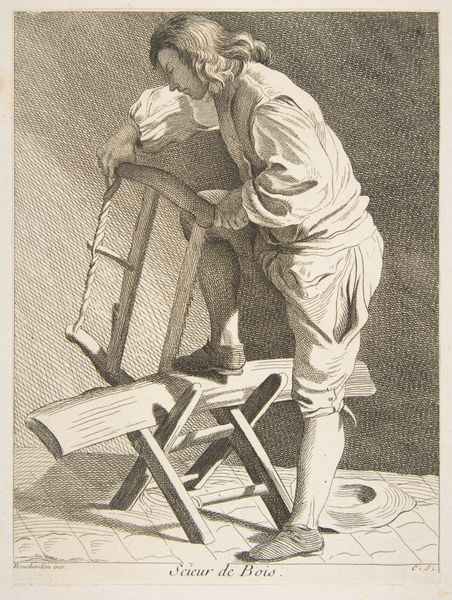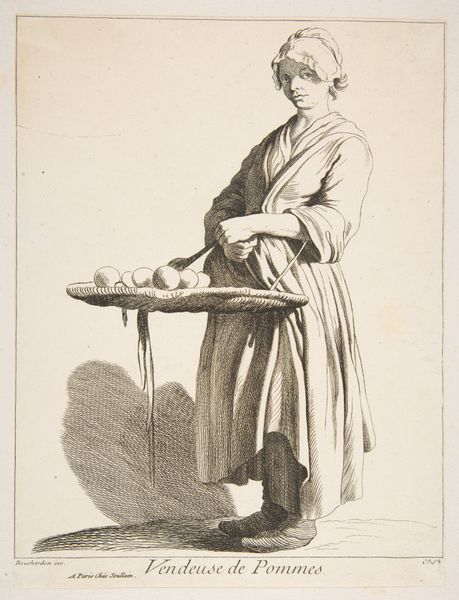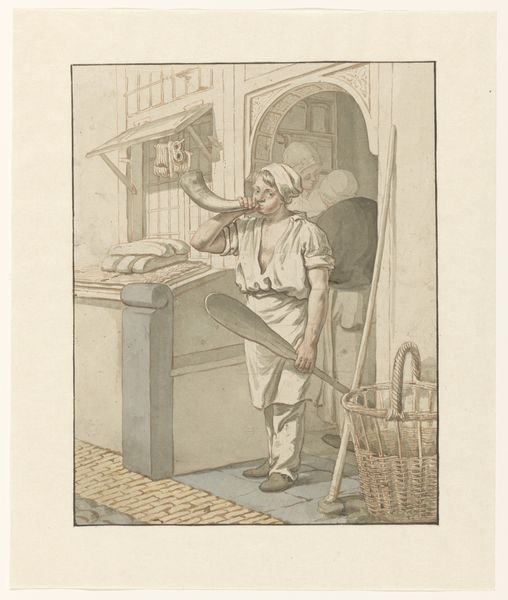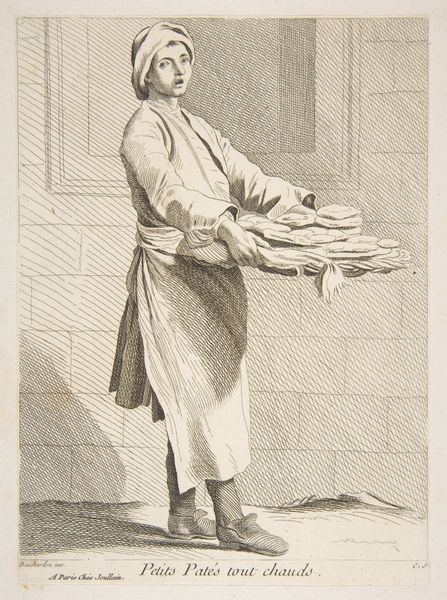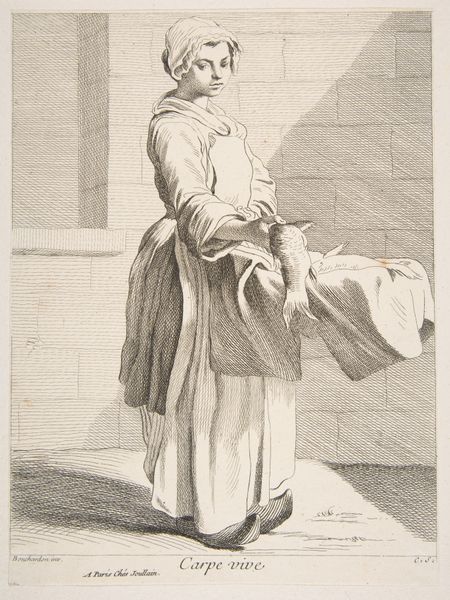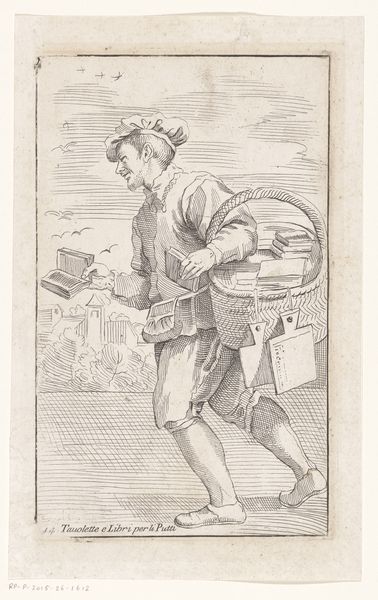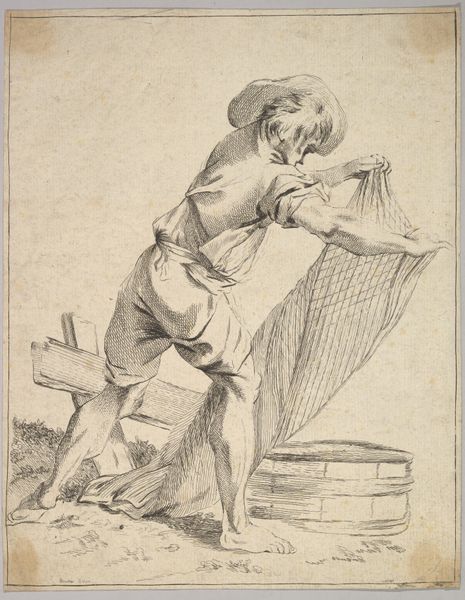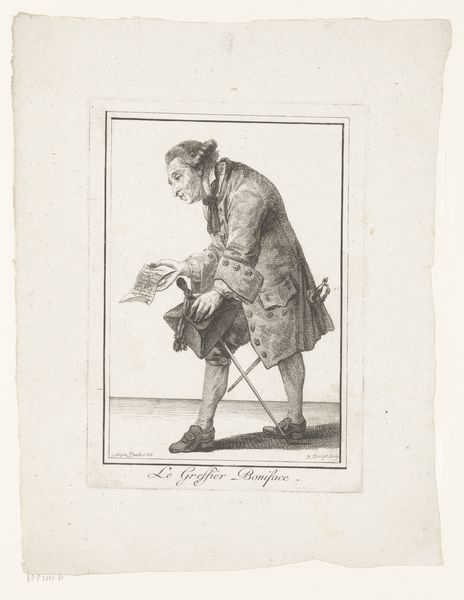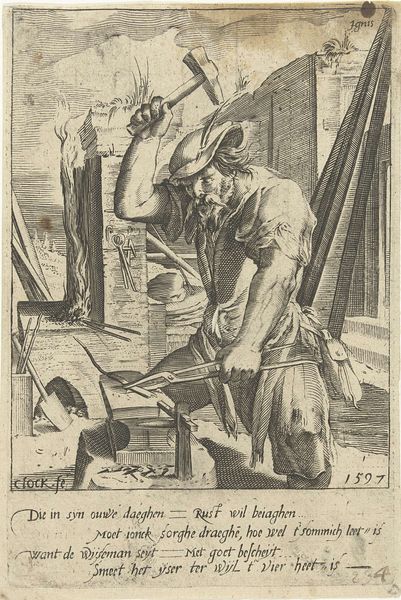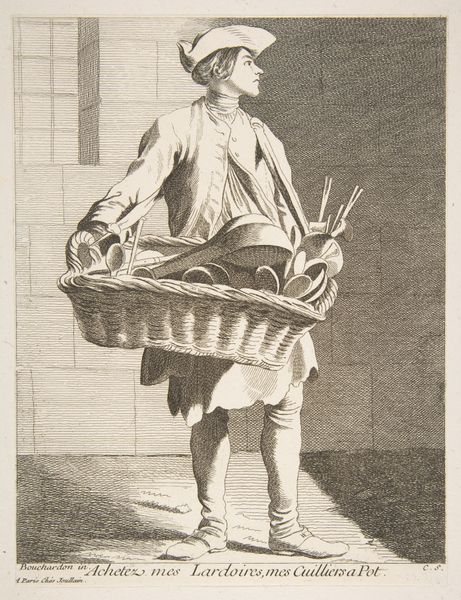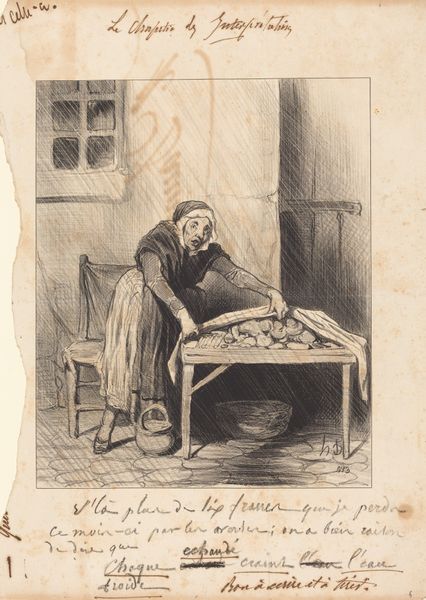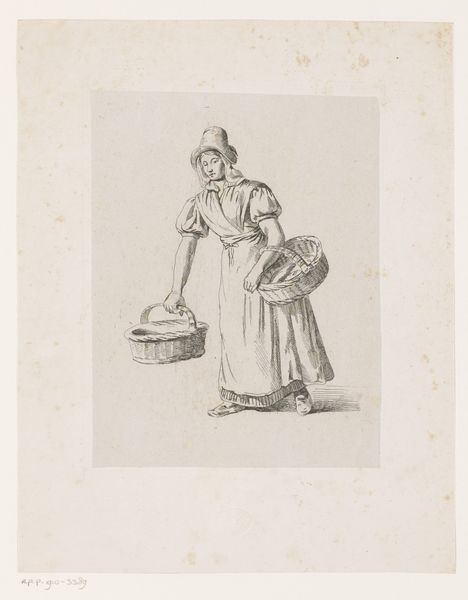
drawing, print, engraving
#
pencil drawn
#
drawing
#
baroque
# print
#
genre-painting
#
engraving
Dimensions: Image: 8 11/16 x 6 5/8 in. (22 x 16.9 cm) Sheet: 9 1/4 x 6 11/16 in. (23.5 x 17 cm)
Copyright: Public Domain
Editor: So, here we have Anne Claude Philippe Caylus's "Stone Cutter," made in 1737. It’s a print, an engraving. It seems like a pretty straightforward depiction of labor, but there’s a stillness to it that feels… I’m not sure, maybe a bit idealized? What do you see in this piece? Curator: It's far from just a simple snapshot of labor. Notice how the stone cutter's figure dominates the composition. This emphasizes the human form, which carries cultural weight from antiquity through the Renaissance revival. Think about the historical arc – from monumental sculptures to these depictions of everyday people, stone, in its various applications, suggests permanence, continuity... almost a grounding of identity. Editor: Grounding of identity… That’s interesting. Is it connected to the tools scattered nearby? Curator: Precisely! Those aren't just any tools. See the square and compass? These are symbolic of creation, geometry, even Freemasonry—ideas connected to the transformation of the rough into the refined, much like how an individual's own moral character may be "cut and polished". It evokes something more than meets the eye – are we looking at literal construction, or the symbolic creation of self, community, society? It’s layered, intentionally. Editor: So, the artist is using these established visual metaphors to add layers of meaning. Fascinating. I’ll definitely see this piece differently now! Curator: Indeed! Visual shorthand persists throughout centuries precisely because images become loaded with meaning—ready to activate recognition in the viewer. Now, how does this reading impact your initial sense that it might be "idealized?"
Comments
No comments
Be the first to comment and join the conversation on the ultimate creative platform.
